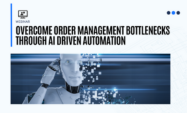SAP AI
Filter By
Browse By
- SAP Analytics and AI
- SAP Application Development and Integration
- All SAP Application Development and Integration
- SAP ABAP
- SAP ABAP Development Tools
- SAP ABAP Test Cockpit
- SAP API Management
- SAP BAPI
- SAP Basis
- SAP BRF
- SAP Business Application Studio
- SAP CMS
- SAP Design Studio
- SAP Development Tools
- SAP DevOps
- SAP EAI
- SAP EDI
- SAP Extension Suite
- SAP Fiori
- SAP Fiori Elements
- SAP Integration Suite
- SAP Low Code Application Development
- SAP Low Code Automation
- SAP Netweaver
- SAP Release Management
- SAP UI5
- SAP Web Application Server
- SAP Web IDE
- SAP Business Process Management
- SAP Center of Excellence
- SAP CIO
- SAP Customer Experience
- SAP Data and Data Management
- All SAP Data and Data Management
- SAP BW
- SAP BW/4HANA
- SAP Crystal Reporting
- SAP Data Archiving
- SAP Data Center
- SAP Data Governance
- SAP Data Integration
- SAP Data Migration
- SAP Data Quality
- SAP Data Services
- SAP Data Strategy
- SAP Data Visualization
- SAP Data Warehouse Cloud
- SAP DMS
- SAP Document Control
- SAP EIM
- SAP ETL
- SAP ETL Tools
- SAP HANA
- SAP HANA Administration
- SAP HANA Deployment Infrastructure
- SAP HANA Studio
- SAP Master Data
- SAP Master Data Governance
- SAP MDM
- SAP Enterprise Architect
- SAP Enterprise Asset Management
- SAP ERP
- SAP Finance
- All SAP Finance
- SAP Accounting
- SAP AR AP
- SAP Asset Accounting
- SAP Billing Systems
- SAP BPC
- SAP BRIM
- SAP Cash Management
- SAP Central Finance
- SAP Controlling
- SAP COPA
- SAP Cost Center Accounting
- SAP e-invoicing
- SAP FICO
- SAP Finance Automation
- SAP Financial Closing Cockpit
- SAP Financial Consolidation
- SAP Financial Planning
- SAP FX Risk
- SAP General Ledger
- SAP Global Tax Management
- SAP Hyperion
- SAP Order to Cash
- SAP Payment Processing
- SAP Profitability Analysis
- SAP Rebate Management
- SAP S/4HANA Finance
- SAP Universal Journal
- SAP Governance Risk and Compliance
- SAP Human Capital Management
- SAP Intelligent Technologies
- SAP Platform and Technology
- All SAP Platform and Technology
- SAP Business Technology Platform
- SAP Cloud Connector
- SAP Cloud Integration Platform
- SAP Cloud Migration
- SAP Cloud Platform
- SAP Cloud Providers
- SAP Cloud Strategy
- SAP Container Platform
- SAP Digital Asset Management
- SAP Digital Integration Hub
- SAP Digital Signature
- SAP HANA Enterprise Cloud
- SAP HEC
- SAP Hyperscalers
- SAP Infrastructure
- SAP Messaging
- SAP Smart Forms
- SAP Quality and Testing
- SAP Security
- SAP Spend Management
- SAP Supply Chain Management
- All SAP Supply Chain Management
- SAP APO
- SAP Asset Management
- SAP Business Network
- SAP Digital Manufacturing Cloud
- SAP Digital Twin
- SAP EWM
- SAP IBP
- SAP Inventory Management
- SAP Label Printing
- SAP Logistics
- SAP Manufacturing
- SAP Manufacturing Automation
- SAP MES
- SAP MII
- SAP MM
- SAP MRO
- SAP MRP
- SAP Order Management
- SAP Plant Maintenance
- SAP PLM
- SAP Production Planning
- SAP S&OP
- SAP SD
- SAP SPM
- SAP Supply Chain Planning
- SAP Track and Trace
- SAP Transportation Management
- SAP System Administration
What is Artificial Intelligence?
In simple terms, Artificial Intelligence (AI) refers to systems or solutions that can replicate human decision-making capabilities. These solutions often leverage a combination of software and hardware to mimic human capabilities like problem -solving and decision making.
AI Enabled Applications in SAP Portfolio
SAP applications leverage AI and ML algorithms extensively to either embed innovative capabilities within their solutions, help end-users perform advanced analytics with minimal technical proficiency, or allow data scientists and ML engineers to build advanced ML models and solutions. SAP HANA has been designed to be easily leveraged as a scalable ML platform. A powerful in-built tool is the Predictive Analytics Library (PAL). SAP data intelligence has a rich ML content library. Like most best-of-breed analytics tools, SAP Analytics Cloud provides users the ability to leverage advanced Machine Learning (ML) algorithms. While ML algorithms have many applications, predictive analytics remains a key one.
What is Artificial Intelligence?
In simple terms, Artificial Intelligence (AI) refers to systems or solutions that can replicate human decision-making capabilities. These solutions often leverage a combination of software and hardware to mimic human capabilities like problem -solving and decision making.
AI Enabled Applications in SAP Portfolio
SAP applications leverage AI and ML algorithms extensively to either embed innovative capabilities within their solutions, help end-users perform advanced analytics with minimal technical proficiency, or allow data scientists and ML engineers to build advanced ML models and solutions. SAP HANA has been designed to be easily leveraged as a scalable ML platform. A powerful in-built tool is the Predictive Analytics Library (PAL). SAP data intelligence has a rich ML content library. Like most best-of-breed analytics tools, SAP Analytics Cloud provides users the ability to leverage advanced Machine Learning (ML) algorithms. While ML algorithms have many applications, predictive analytics remains a key one.
On the business processes side, SAP AI offering promises to infuse transformative intelligence to all key business processes areas like lead to cash, design to operate, source to pay and recruit to retire. AI algorithms help include innovative features across all these processes.
Key Considerations for SAPinsiders
- Develop a fundamental understanding of AI algorithms: Explore what specific algorithms are available and understand where they can be leveraged. This will help you get optimal value from these tools. As an example, you should be aware that you can use clustering algorithms for customer segmentation. Here is an example of a good overview of critical algorithms used in SAP applications.
- Understand the limitations of underlying data infrastructure: Understanding aspects of the underlying database is also critical. This helps you build pragmatic models. As an example, HANA has a 2 billion rows limitation, and hence you may have to leverage partitioning of tables for data larger than that. This impacts your model development as well.
- Understand the limitations of tools available: Understanding the ML tools’ limitations is another aspect that saves you a lot of pain. For example, some PAL algorithms have limits on the number of parameters. This means you will have to pay more attention to feature selection or feature engineering while building models with these algorithms. You can find several examples of these limitations on the SAP help portal and SAP blogs.
105 results
-

eBook: A Guide to Modern IT Service Management with AIOps
Reading time: 1 mins
Today’s deployments are large and complex, with IT services built on dynamic, hybrid environments. Teams must ensure 100% service availability, however without the right technology, operational challenges lead to poor service level indicator (SLI) performance. Organizations must break down silos and visibility gaps to drive a holistic IT service management (ITSM) approach and protect revenue.…
-

- SAP AI
 Premium
Premium
Using AI to Eliminate Barriers to Entry
Reading time: 5 mins
Advances in technology and computing, like AI algorithms, are lowering barriers to entry across industries. Barriers to Entry, in simple terms, mean that the investment and resources that a new player needs to enter a market are high enough to keep the majority of prospects out. So what aspects have led to significant lowering or,…
-

- SAP AI
 Premium
Premium
Conversational AI for Inventory Planning
Reading time: 3 mins
Conversational AI is a powerful tool already being leveraged in many functions and augmented analytics tools. There is an opportunity to further explore this technology in the area of supply chain planning. This article explores how conversational AI can be leveraged for inventory planning and management. With application examples, it touches upon the two key…
-
-

- SAP AI
 Premium
Premium
AIoT in Supply Chain Planning
Reading time: 5 mins
Internet of things (IoT) devices are now being used in most major supply chains in some forms, at various scales. These devices leverage the internet to collect and exchange data about supply chain activities. Cisco estimates that by 2025, there will be 42 billion IoT devices in use globally. Cisco also estimates that IoT devices…
-

Overcome order management bottlenecks through AI Driven Automation
May 23, 2022
In a world where consumers want products quickly and effortlessly- Many businesses are facing challenges such as fulfilling high volumes of online orders, timely dispatch, human error from outdated manual processes and tracking products through their order lifecycle. View this webinar on-demand to learn how order management automation can help to overcome these challenges by providing increased visibility into…
-

- SAP AI
 Premium
Premium
Competitive Advantage Through AI-Powered Talent Management
Reading time: 6 mins
As per statistics released by the Manpower group in 2021, over 20 million jobs were eliminated during a two-month period in 2020. If that was the trough, the current labor market scenario is at its peak. In sharp contrast to 2020, 2022 is the best market that job seekers have experienced over their career. Employers…...…
-

Discussing AI Powered Talent Management with Phenom
Reading time: 1 mins
Employers can no longer keep relying on legacy data points like educational qualifications and work experience, combined with a conventional interview process to validate skills and determine “cultural fit”. Overall, this approach is legacy, subjective, has multiple drawbacks, and can introduce potential bias opportunities. However, the good news is that with advances in data science,…
-
-

Evolving Your Organization’s AI Capabilities
Reading time: 3 mins
By Kumar Singh, Research Director, SAPinsider AI is a critical component in helping organizations transform the way they operate, improve customer service, and offer new opportunities to their workforce. At SAPinsider, we will be publishing an AI and ML State Of the Market benchmark report for the first time in early 2022, to capture insights…
-

Taking AI from Buzzword to Reality
Reading time: 7 mins
For many companies, determining where and how to apply artificial intelligence (AI) technology for business gain can be an elusive objective as leaders grapple with understanding its complexity. Viakem, an 81-year-old specialty chemicals manufacturer based in Mexico, recently completed a successful AI initiative to support its HR function. As part of the initiative Viakem’s CIO…
-

Looking for Opportunities to Leverage Artificial Intelligence (AI) in Your Business ? Use These Three Ingredients
Reading time: 3 mins
by Kumar Singh, Research Director, Automation & Analytics, Supply Chain Management, SAPinsider Common business sense dictates that no two organizations will be the same in terms of organizational structure, culture, current capabilities etc. so any strategic initiative that may work for one might not work for another. Yet, when we embark on strategic digital…
Featured Insiders
-

Damien Johnson
Global Chief Architect - RISE Ecosystems, SAP
-

Shawn Brown
Senior Director, SAP
-

Nathan Williams
Director, Development & Innovation. NIMBL
Become a Member
Unlimited access to thousands of resources for SAP-specific expertise that can only be found here.
Upcoming Events
Related Vendors
Your request has been successfully sent


